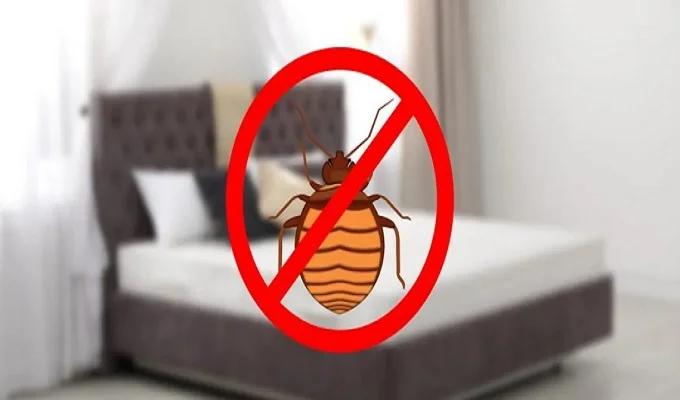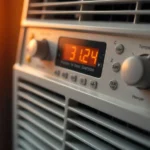When bed bugs invade your home, you need an effective solution. Two popular methods are heat treatment and chemical extermination. But how do they compare?
Heat treatment for bed bugs kills them quickly and without chemicals. It heats your home to a temperature where bed bugs cannot survive. Chemical methods, on the other hand, use insecticides to eliminate the pests. Each has its pros and cons.
Choosing the right one can make a big difference in your battle against these stubborn invaders. Let’s explore which option is best for you. Read on and learn more.
Heat Treatment 101
Heat treatment is a chemical-free way to get rid of bed bugs. It works by raising the temperature inside your home to at least 120 degrees Fahrenheit. Bed bugs and their eggs cannot survive at this high temperature.
During the process, professionals use special heaters and fans. These tools ensure that heat reaches every corner of the infested area. This method is known for its quick and effective results.
Bed bug heat treatment also means less preparation for you. There’s no need to wash all your belongings or worry about chemical residues. Once the treatment is done, you can safely return home.
Benefits of Heat Treatment for Bed Bugs
Heat treatment offers a chemical-free solution to bed bug problems. It’s safe for everyone, including pets and plants. You don’t have to worry about toxic chemicals lingering in your home.
Another benefit is the quick results. The entire process can be completed in a single day. This is much faster than waiting for chemical treatments to take effect. Also, it can kill all life stages of bed bugs instantly.
Heat treatment also requires less preparation. There’s no need to wash and bag your items like with other methods. This makes it a more convenient option for busy households.
Drawbacks of Heat Treatment
Despite its benefits, heat treatment has some drawbacks. It can be time-consuming because it requires thorough planning and setup. You’ll need professional help to get the temperature right.
Another issue is the cost. Heat treatment can be more expensive than chemical methods. The equipment and labor needed to raise and maintain the high temperatures add to the price.
Lastly, heat treatment might not reach all areas. Bed bugs can hide in places where heat does not penetrate well. It may not reach bugs hidden deep within walls or furniture. This means that some bugs might survive, leading to future infestations.
Chemical Treatment Explained
Chemical treatment uses insecticides to kill bed bugs. Professionals apply these chemicals to infested areas. These can be applied as sprays, dusts, or aerosols and it requires careful handling. They target spots where bed bugs live and breed.
Different insecticides have different effects on bed bugs. Some work fast to kill them on contact. Others have residual effects to prevent future infestations.
Bed bugs exterminators know how to use these chemicals safely. They make sure that the treatment targets the pests without harming you or your pets. Chemical treatment can be a long-lasting solution when done correctly.
Pros of Chemical Treatments
Chemical treatments can be a cheaper option for getting rid of bed bugs. The cost of insecticides is usually lower than the cost of heat treatment equipment. This makes it more affordable for many families.
Another advantage is the lasting effects of chemicals. Some insecticides remain active for weeks. This helps prevent bed bugs from coming back for a long time. This creates a significant advantage when combating recurring infestations.
Chemical treatments are also effective in hard-to-reach areas. They can be sprayed into cracks and crevices. This ensures that bed bugs hiding deep inside walls or furniture get killed.
Cons of Chemical Treatments
Despite their benefits, chemical treatments do have downsides too. Chemical treatments pose some health risks. Insecticides can cause allergic reactions or respiratory issues. It’s important to follow safety guidelines to protect your family and pets.
Another downside is the need for multiple treatments. Some particular strains of bed bugs have developed resistance against specific pesticides. This means you might need repeated treatments for full extermination.
Chemical treatments also require extensive preparation. You must wash and bag many household items. This can be time-consuming and stressful for busy families. Proper preparation is key to the treatment’s success.
Comparing Effectiveness
Heat treatments and chemical methods are both effective but in different ways. Heat treatment kills bed bugs fast, often in one day. Chemical treatments can take longer but offer lasting protection.
Heat treatment targets all bed bug life stages. This means it can kill eggs, nymphs, and adults all at once. Chemical treatments might need multiple applications to achieve the same results.
While heat treatments can miss hidden bugs, chemicals can reach deep into cracks. This makes chemicals great for hidden infestations. However, some bed bugs can develop resistance to insecticides over time.
Cost Comparison
Heat treatment can be quite expensive. The high price comes from the equipment and professional labor needed. Many families find this cost hard to manage.
Chemical treatments, on the other hand, tend to be more budget-friendly. The insecticides are cheaper than the heaters used for heat treatment. This makes it a more affordable option for many households.
Both treatments have hidden costs, too. With heat treatment, you may need a backup plan if it fails. For chemical treatment, multiple sessions could add up over time. Weighing these costs can help you choose the best option for your budget.
Treatment Preparation
Getting ready for bed bug treatment is important. For heat treatment, the preparation is comparatively minimal. You might need to remove heat-sensitive items and ensure that the whole house is accessible to the exterminators.
For chemical treatment, you need to do more preparation. You must wash and bag your clothes, linens, and other items. This can be time-consuming and stressful.
The key to success is following all instructions provided by the exterminators. This ensures that the treatment has the maximum effect on bed bugs.
Health Implications
When choosing a bed bug treatment, consider the health implications. Heat treatment is safe since it only uses high temperatures. No chemicals mean fewer health risks for your family and pets.
Chemical treatments can pose more health hazards. Insecticides might cause allergic reactions or breathing issues. It’s key to follow all safety guidelines during and after treatment.
Some chemicals linger in your home for weeks. This can be harmful, especially for children and those with allergies. Balancing effectiveness and health safety is important in exterminating bed bugs. Therefore, knowing the risks can help you make an informed decision.
Post-Treatment Care
After treatment, it’s important to follow post-treatment care steps. For heat treatment, allow your home to cool down before reentering. Check for any remaining bed bugs or eggs and report them.
For chemical treatments, ventilate your home well. Wash all clothing, sheets, and other items exposed to insecticides. Keeping these items clean ensures the chemicals are not harmful.
Regularly check your home for signs of bed bugs. Use mattress covers and inspect furniture often. Keeping your home clean can help prevent future infestations. Follow these steps to maintain a bed bug-free environment.
Long-Term Prevention
Preventing future bed bug infestations involves more than just one-time treatment. For long-term prevention, regular inspections and maintenance are important. After heat treatment, monitor your home for any signs of bed bugs.
Using mattress covers can also prevent future infestations. These covers make it harder for bed bugs to hide and lay eggs on your mattress. Regularly wash and inspect bedding, furniture, and other items that could harbor the pests.
Chemical treatments with residual effects help prevent future infestations too. If you opt for this method, ensure you follow all instructions provided by the exterminators.
Evaluate Your Situation
Before you pick up a bed bug treatment, evaluate your situation. Look at the level of infestation in your home. A heavier infestation may need a different approach than a minor one.
Consider your budget for the treatment. Heat treatment can be more costly, while chemical treatments might fit a smaller budget. Think about what you can afford without compromising on effectiveness.
Also, assess any health concerns in your household. If anyone has allergies or asthma, chemical treatments might not be ideal. Understanding your specific needs helps you make the best choice for your home.
Consult With Professionals
Consulting with professionals is important in dealing with bed bug infestations. They can provide guidance tailored to your specific situation.
Professionals can also identify the best treatment for your home. This helps in avoiding ineffective solutions that waste time and money. For more information about bed bug control services, click here.
Moreover, experts ensure that treatments are safe for your family and pets. They follow strict protocols to minimize any health risks. Having professional help gives you peace of mind throughout the process.
Making the Final Decision: Is Heat Treatment for Bed Bugs Your Best Bet?
Choosing the right method to eliminate bed bugs is important for effective results. Both heat treatment for bed bugs and chemical treatments have their pros and cons. Heat treatment for bed bugs offers a chemical-free, quick solution, while chemical treatments can provide long-lasting protection.
Carefully evaluate your situation, budget, and health concerns to make the best decision. Consulting with professionals can also guide you toward the most effective and safe treatment for your home.
Did this article help you? If so, take a look at some of our other blog posts for more informative reads.




No Comment! Be the first one.